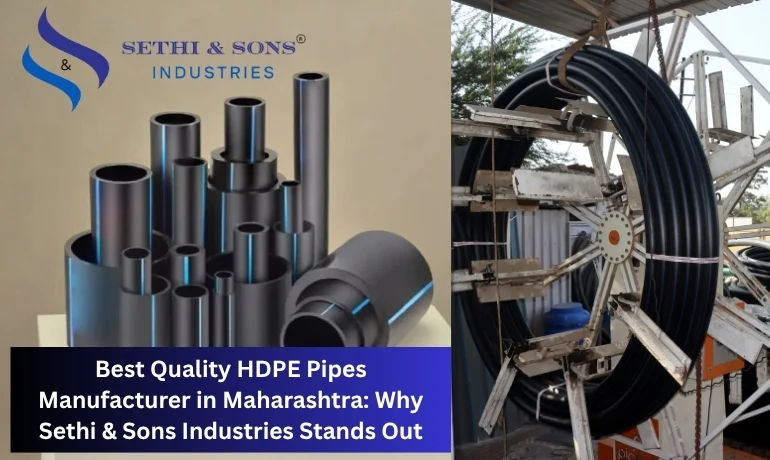The smart Trick of American Plastics That Nobody is Discussing
Table of ContentsWhat Does American Plastics Mean?American Plastics Fundamentals ExplainedThe 10-Second Trick For American PlasticsAmerican Plastics Fundamentals ExplainedUnknown Facts About American Plastics
This consideration is particularly essential for applications that entail high-pressure fluids. The scale and scope of the project likewise play a significant role in size selection. Larger jobs may require pipelines with greater sizes to efficiently distribute liquids over cross countries. Aspects such as terrain difficulty, the capacity for environmental anxiety, and the installment setting must influence the pipe size to guarantee a successful, enduring application.
Involve with specialist recommendations to verify your selection and adapt as necessary for optimum results. Equipped with this expertise and the workable actions detailed, you are well-appointed to make informed choices when choosing HDPE pipeline dimensions for your tasks. Your focus to information in this option process will go a lengthy means in making sure the efficiency, safety, and cost-effectiveness of your piping systems.
Excitement About American Plastics
Due to the fact that HDPE is lightweight and chemically inert, it can handle liquid and gas transport with minimal maintenance. HDPE pipelines are widely embraced across a variety of sectors due to their versatility and strength. One of one of the most usual usages for HDPE pipeline is in water systems. HDPE's rust resistance makes it suitable for both potable and non-potable water circulation, whether in community networks or personal systems.
: HDPE pipes are signed up with via warm blend, creating a seamless, homogenous link as solid as the pipe itself. This leak-proof joint is crucial in gas and water distribution, where leakages can lead to hazardous situations or pricey waste.: HDPE pipelines are lighter than typical steel pipes, making them easier to transport and install.
We have stockrooms in multiple locations to guarantee a quick reaction. You can obtain detailed product information and estimates via our main web site, by phone, or by e-mail. Our basic and fast ordering process and reliable logistics ensure you get your 4-inch HDPE pipeline in the fastest feasible time. Our after-sales group is readily available 24/7 to aid with any type of concerns you might run into, making sure satisfaction.
PE 80 is for simple industrial applications like gas and water, while PE 100 provides long-lasting stamina and efficiency for harder usages. For a concise check out applications, below are some of the most typical kinds of HDPE piping and their applications. Piping systems use PE 32 or PE 40 for low-pressure applications.
How American Plastics can Save You Time, Stress, and Money.
PE 80 has a material resistant to splits, so it appropriates in applications susceptible to fracturing, like sewer systems and water distribution lines. PE 100 is also resistant to splits, and 100 N/mm2 is the minimum needed stamina. As mentioned, categories of HDPE piping include nominal stress, product, and shade coding.
Manufacturers produce pipes with various stress grades (PN grades). This shows the pressure in bars the pipe can sustain with water at 68 degrees Fahrenheit. The stress qualities follow European standards, and they are: PN 2.5 max pressure 2.5 bar PN 4max pressure 4 bar PN 6max pressure 6 bar PN 10max pressure 10 bar PN 16max stress 16 bar The shade codes that show the pressure quality are yellow for PN4, red for PN6, blue for PN10, and green for PN16.
The complete find more info list of dimensions is substantial. Nevertheless, pipe providers provide sizing overviews with additional information like wall surface thickness and mass. Quality control adheres to ISO criteria managing the material layout and minimum necessary strength (MRS) of pipelines. Typically, quality control tests notify the suppliers if the HDPE pipes can offer 50-plus years of service under regular operating conditions.
Industries take into consideration nominal pressure, product, and various other components when establishing which pipelines to use - high quality hdpe pipe. Today, you'll see high-density polyethylene pipelines in water, gas circulation, farming, and much more. Industries use PN 10 grade HDPE pipe for supply of water and distribution networks. You'll normally see it in multistory apartment or condo complexes.
The 15-Second Trick For American Plastics

It's worth keeping in mind that gas needs high resistance to stress, making PN-16 to PN-2 quality pipelines appropriate for operations. The farming industry makes use of HDPE pipes for irrigation and drain.
Mining firms utilize pipes for slurry transportation and dewatering. Lastly, HDPE piping can shield cables in the telecom sector. This is valuable for below ground cable televisions. The ideal component is that services can use general PN course pipelines for this application. Industries pick HDPE piping over conventional pipes because they provide a lot more advantages.
For beginners, HDPE pipelines are remarkably sturdy and can last a lengthy time with minimal maintenance. They're additionally resistant to rust, chemicals, and UV rays. https://americanplastics.bandcamp.com/album/american-plastics. HDPE pipelines are also cost-efficient compared to various other piping products. They're much less prone to damage, which cuts fixing expenses! HDPE pipelines are lighter than traditional pipelines for far better handling and transport.
More About American Plastics
Whether you're a specialist, engineer, or DIY lover, this short article will give you with the knowledge to make enlightened choices and achieve optimal results. When it involves picking the ideal HDPE pipeline for your task, recognizing the PSI ranking is of utmost relevance. The PSI score gauges the toughness and pressure capacity of the pipe, showing exactly how much pressure it can withstand without failure.
The PSI score of an HDPE pipeline identifies its capability to take care of various pressure degrees. Pipes with greater PSI ratings can withstand greater pressure, making them ideal for applications that entail higher liquid or gas pressures. On the various other hand, pipes with reduced PSI ratings are optimal for low-pressure applications.